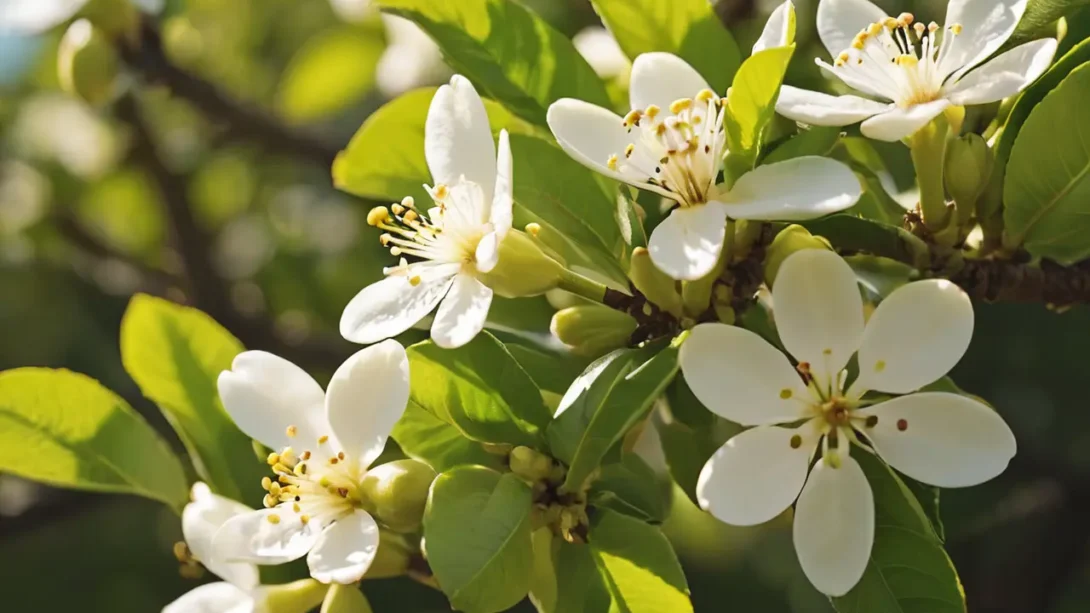Lemon trees (Citrus limon) are among the most popular citrus trees cultivated worldwide, valued not only for their fragrant, zesty fruit but also for their ornamental appeal. These evergreen trees grace gardens and commercial orchards alike, offering lush foliage, sweetly scented flowers, and vibrant yellow fruit. Understanding when lemon trees bloom is crucial for both home gardeners and professional growers, as the blooming period significantly influences the care practices and harvest expectations. While several factors affect the flowering of lemon trees, climate and variety stand out as the primary determinants of their blooming cycle.
Lemon Tree Varieties
Lemon trees boast a diversity that often surprises those new to citrus cultivation. From the popular Eureka and Lisbon varieties known for their year-round fruit production in optimal climates, to the Meyer lemon, which is actually a hybrid between a lemon and an orange, offering a sweeter fruit and a slightly different blooming pattern. Each variety has unique characteristics, including differences in cold tolerance, fruit size, and flavor, which in turn influence their blooming seasons. Recognizing the variety of your lemon tree is the first step in predicting its blooming cycle and ensuring its proper care.
Climatic Influence on Blooming
Climate plays a pivotal role in the life cycle of lemon trees, directly impacting when they bloom. In general, lemon trees thrive in warm, frost-free environments, with their blooming heavily influenced by temperature, daylight hours, and seasonal changes. In tropical and subtropical regions, where conditions are ideal year-round, lemon trees may bloom multiple times a year. Conversely, in temperate regions, blooming typically occurs once a year, often in spring, as the trees emerge from their winter dormancy. The interplay between variety and climate means that the blooming season for lemon trees can vary significantly from one location to another, underscoring the importance of local knowledge in successful lemon tree cultivation.
Typical Blooming Seasons
The blooming season of lemon trees can vary widely depending on their growing environment. In tropical and subtropical climates, where conditions mimic their native habitat, lemon trees can bloom almost all year round, with peaks in blooming often seen in spring and autumn. This continuous blooming cycle is a boon for growers, providing multiple harvests throughout the year. However, in temperate climates, lemon trees have a more defined blooming season. Typically, these trees will begin to flower in late winter or early spring as the weather warms up. This singular bloom period is crucial for fruit set, as it determines the harvest for the entire year. Some lemon tree varieties, especially those bred for cooler climates, are adapted to bloom once the risk of frost has passed, ensuring the survival of the blossoms and the potential for fruit.
Factors Affecting Lemon Tree Blooming
Several factors can influence the blooming of lemon trees, beyond just variety and climate. The age of the tree plays a significant role; younger trees, or those that have been recently planted, may take a few years to begin blooming as they focus on establishing their root systems. Pruning practices also affect flowering; excessive or poorly timed pruning can remove flower buds or disrupt the tree’s natural growth cycle. Water availability is another critical factor; both drought and waterlogging can stress the tree, potentially delaying or reducing bloom. Nutrient management, particularly the balance of nitrogen, phosphorus, and potassium, can influence not only the health of the tree but also its blooming and fruiting. Adequate levels of phosphorus, for example, are essential for bud development.
Caring for Lemon Trees During Bloom
To ensure healthy blooms and maximize fruit set, specific care practices should be adopted during the blooming period. Watering needs increase as the tree prepares to bloom and throughout the flowering period to support the development of blossoms and nascent fruit. However, it’s important to avoid waterlogging the soil, which can lead to root rot. Fertilization should be carefully managed; a low-nitrogen, high-phosphorus fertilizer can encourage blooming and fruit set without promoting excessive leaf growth at the expense of flowers. Pest management also becomes critical during this time, as pests like aphids, scale insects, and citrus leaf miners can damage flowers and emerging fruit. Implementing integrated pest management strategies, such as encouraging beneficial insects and using eco-friendly pest control methods, can help protect the blossoms and ensure a healthy fruit set.
Conclusion
Understanding the blooming cycle of lemon trees is fundamental to achieving successful cultivation and bountiful harvests. The interplay between variety and climate primarily dictates when these citrus wonders will offer their fragrant blossoms, setting the stage for the subsequent fruiting period. Gardeners and growers must pay close attention to their local conditions, as well as the specific needs of their chosen lemon tree varieties, to align their care practices with the natural rhythm of these trees.
Monitoring and adjusting for factors such as the age of the tree, proper pruning techniques, water availability, and balanced nutrient management are essential to encourage healthy and abundant blooming. During the bloom period, specific care practices, including appropriate watering, fertilization, and pest management, are crucial for ensuring the health of the flowers and the success of the fruit set. By fostering a conducive environment for their lemon trees during this critical phase, gardeners can look forward to enjoying the fruits of their labor — literally and figuratively.
The journey of growing lemon trees, from the anticipation of their blooming to the harvesting of their fruit, is a rewarding endeavor that requires patience, knowledge, and a keen eye for the nuances of plant care. Whether you’re a home gardener looking to add a touch of citrus to your garden or a commercial grower aiming for high yields, understanding and working with the natural blooming cycle of your lemon trees is key to success. With careful attention and the right practices, you can ensure your lemon trees thrive, bloom beautifully, and produce plentiful, zesty lemons for years to come.




